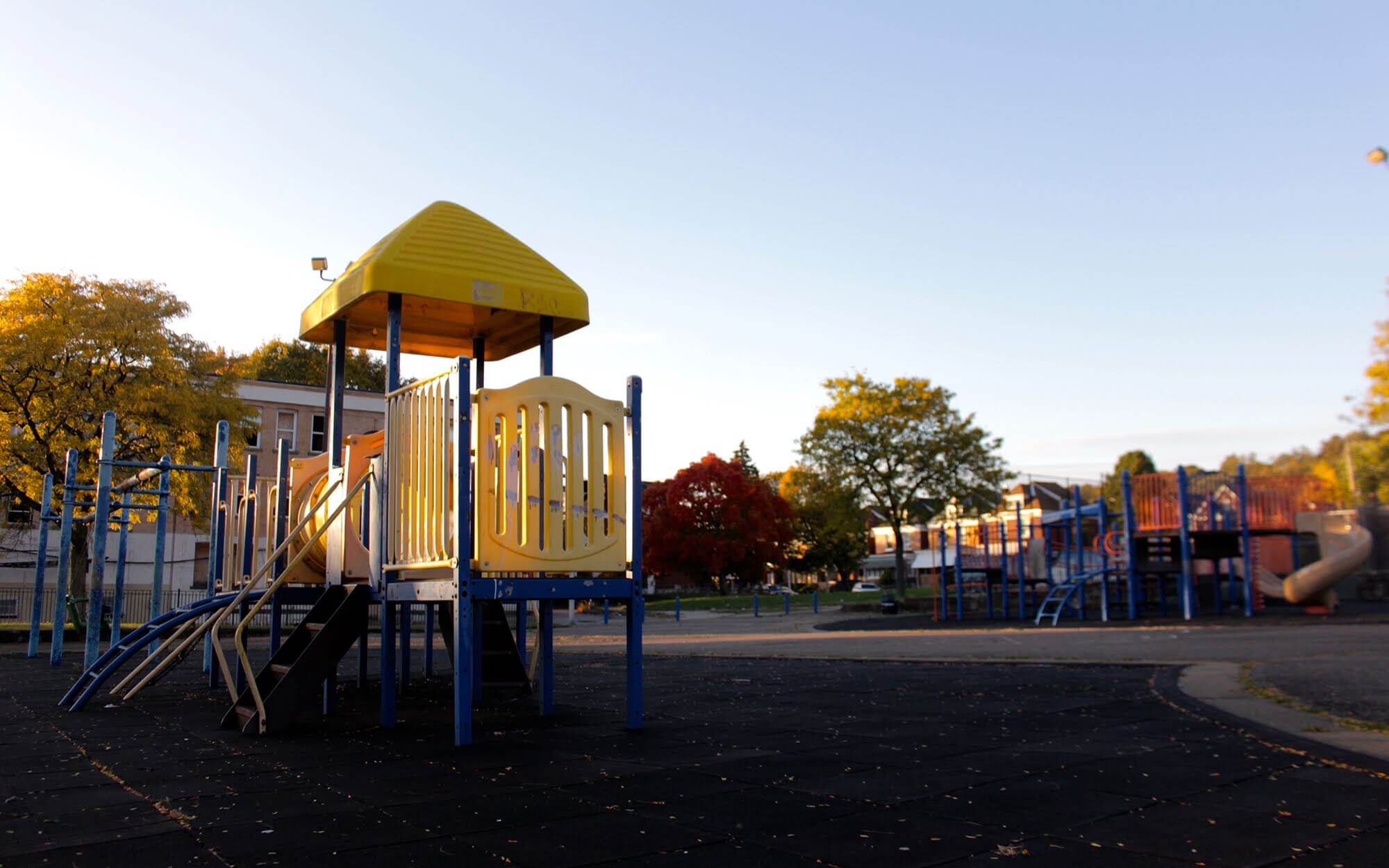


Parks can improve the health of people and communities, but there's some skepticism that the city has more pressing priorities and shouldn't use a tax referendum for this cause.
Oliver MorrisonMarcus Dorsey is the third generation in his family to work at Dorsey Records, a music store that opened in Homewood in 1946.
As a child, while his dad and grandpa worked in the store, he played across the street in Baxter Parklet, a small 2-acre park on the corner of Frankstown and North Braddock avenues. A firetruck used to sit in the park, he said, and some of the adults hanging around would pretend like the truck was moving when he turned the steering wheel. As he got older, he preferred to be taken to Highland Park, where the playgrounds are bigger. Still he spent a lot of time at the neighborhood park because it was so close.
Dorsey’s daughter, now in college, used to ride her bike at Baxter Parklet while her father worked at the shop. Dorsey’s son did, too. Now that his son is older, Dorsey is more likely to take him to Frick Park, where there are more kids and better amenities. He’s seen the padding under the swings replaced several times at Frick Park.
“I’ve seen other parks get redone probably two and three times since [Baxter] was” last redone in the early 1990s, he said.
Now Baxter parklet is largely empty, Dorsey said. Occasionally, he’ll see a couple of kids playing football at the park in the evenings. There are cracks in the playground padding, the equipment has graffiti and the paint on the swings has chipped off. When he walks his dog through the parklet, he said he has to keep his eye out for broken glass among the weeds.
Baxter Parklet is one of 165 parks in the city that, according to the City of Pittsburgh, are in dire need of resources. If voters approve a property tax increase in November, they would have the resources for a major transformation for the first time “in a generation.”
Parks play a critical role in the health of people and communities, according to a growing body of scientific research. Green space has a calming effect that has a broad impact on the health of residents, particularly for the young and old. And the communal space not only provides an important space for exercise, but can play a critical role in bringing a community together and growing wealth.
The Pittsburgh Parks Conservancy, under the leadership of its president, Jayne Miller, is trying to take a more active role in ensuring that residents across the park system get to share in these benefits equally.
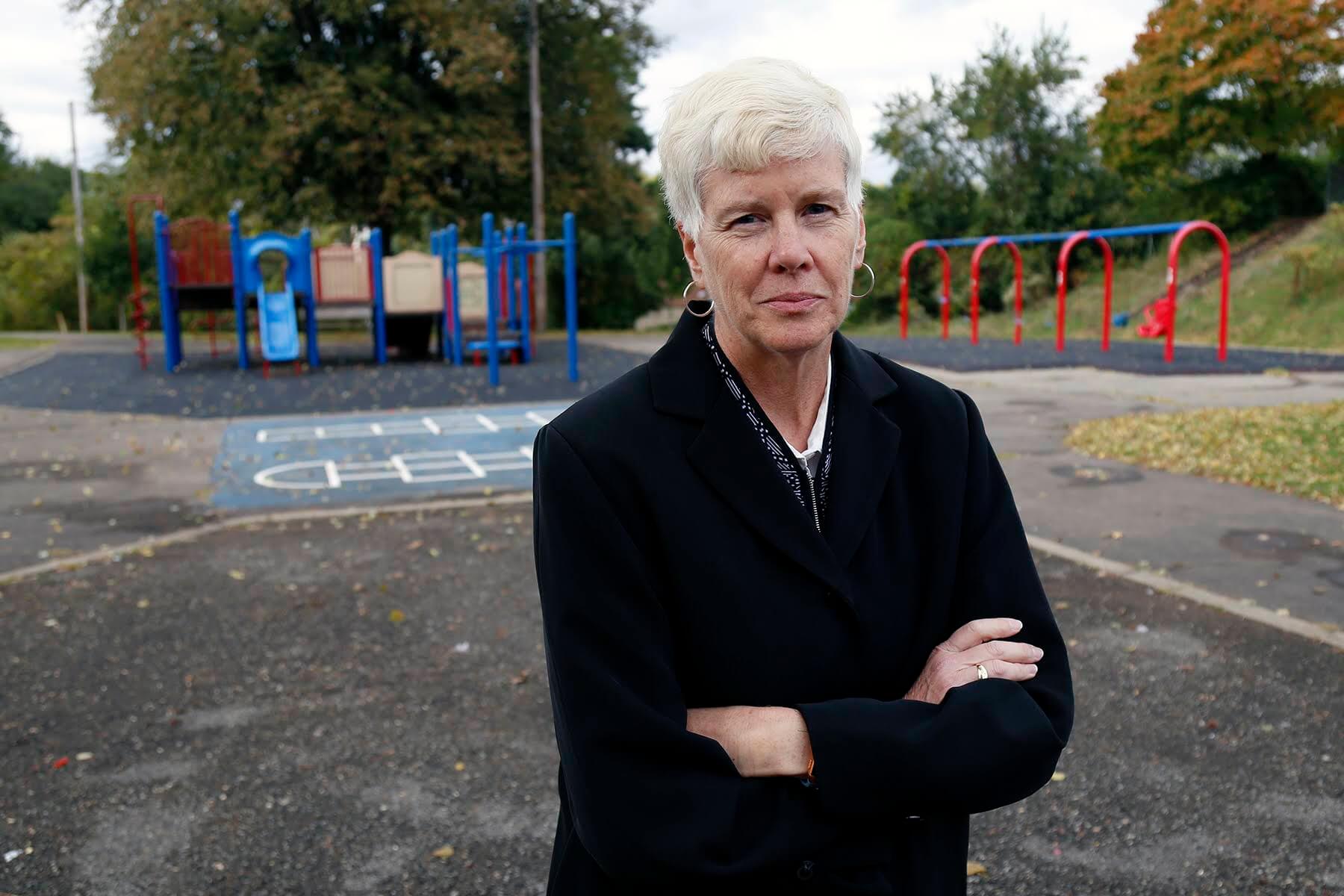

Historically, the conservancy has been a major private fundraiser to help the city with some of its biggest park projects. In 2000, the city and the conservancy released a master plan to shore up the city’s four regional parks. Now the conservancy is turning its attention to the smaller neighborhood parks, as hundreds of mayors across the country, including Mayor Bill Peduto in Pittsburgh, have committed to providing a quality park within a 10-minute walk. While 91% of Pittsburgh residents live near a green space, the city says it has not had the resources to ensure their quality.
It’s no accident that Baxter would be the first in the parks system to get an upgrade. While every park in the city would see improved maintenance and extra money for refurbishment, the transformative expenditures would start in communities like Homewood that show the greatest needs.
When Dorsey heard that Baxter Parklet would receive $3 million if the parks referendum passed, he walked to the window of his record shop and looked outside, imagining what it could become. He liked the idea that the conservancy is prioritizing communities like Homewood. "We need help, that’s for sure,” he said. “Whether it feels right or not, we need help.”
Dorsey is skeptical that the investment would revitalize the neighborhood because so much has changed and the obstacles to Homewood seem difficult to surmount. The park has abandoned properties, vacant lots and litter on all sides. But the idea was exciting.
“It would be cool to look outside and see a ton of people,” he said. “I’m 41 years old and I don’t know what that looks like, to see all kinds of people over there.”

The referendum would generate an infusion of new money but it would take decades to apply it across the system. The new property tax to support Pittsburgh's parks would cost homeowners $50 per year for every $100,000 of assessed property. If passed, it’s expected to generate about $10 million annually. The conservancy is hoping to get a matching $10 million annually from private foundations.
The city and conservancy together spend an average of just under $20 million per year on the parks now, so this would double the overall spending on the city’s parks.
According to Miller, the parks need about $33 million more per year, so there would still be a shortfall of about $13 million per year.
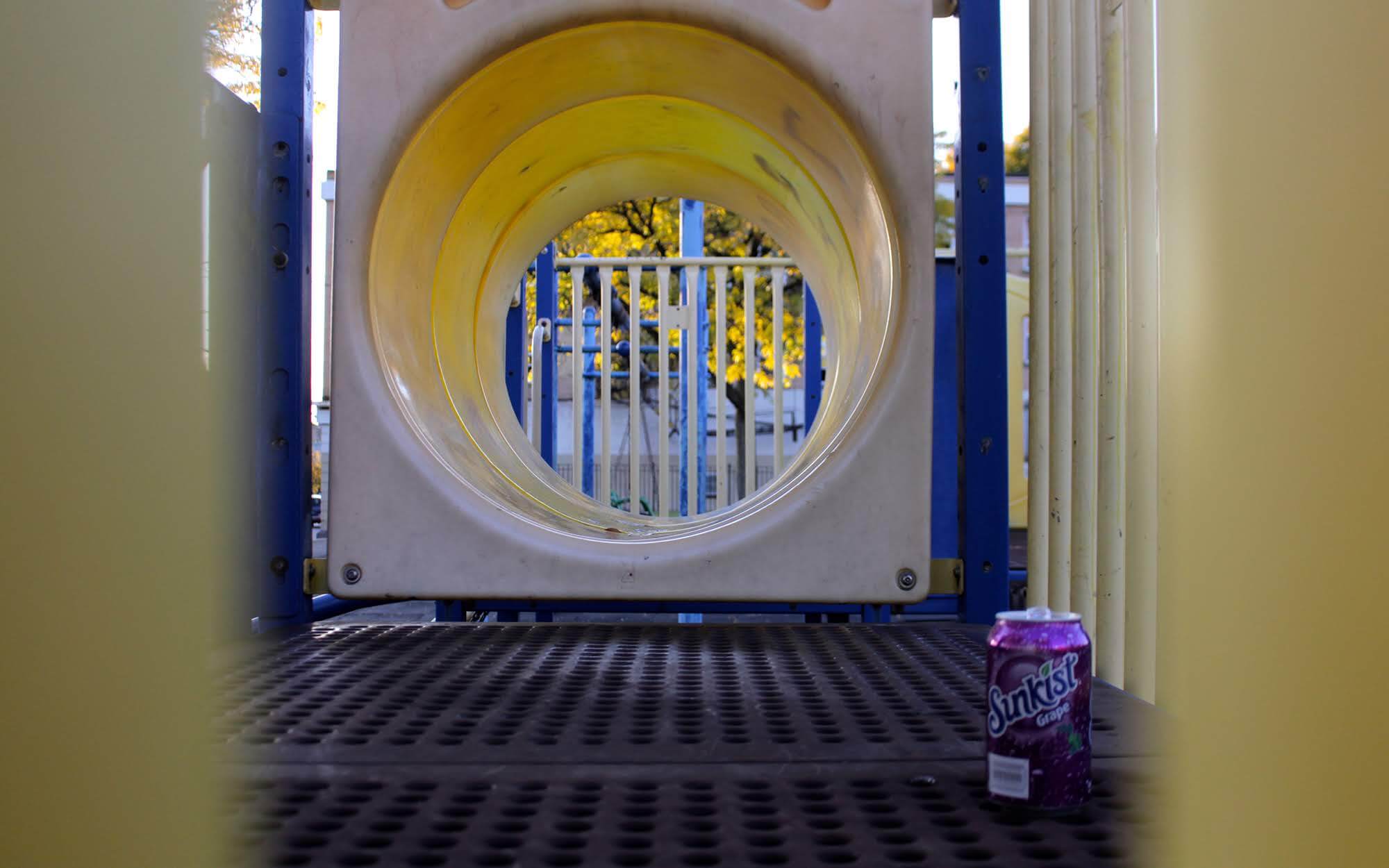
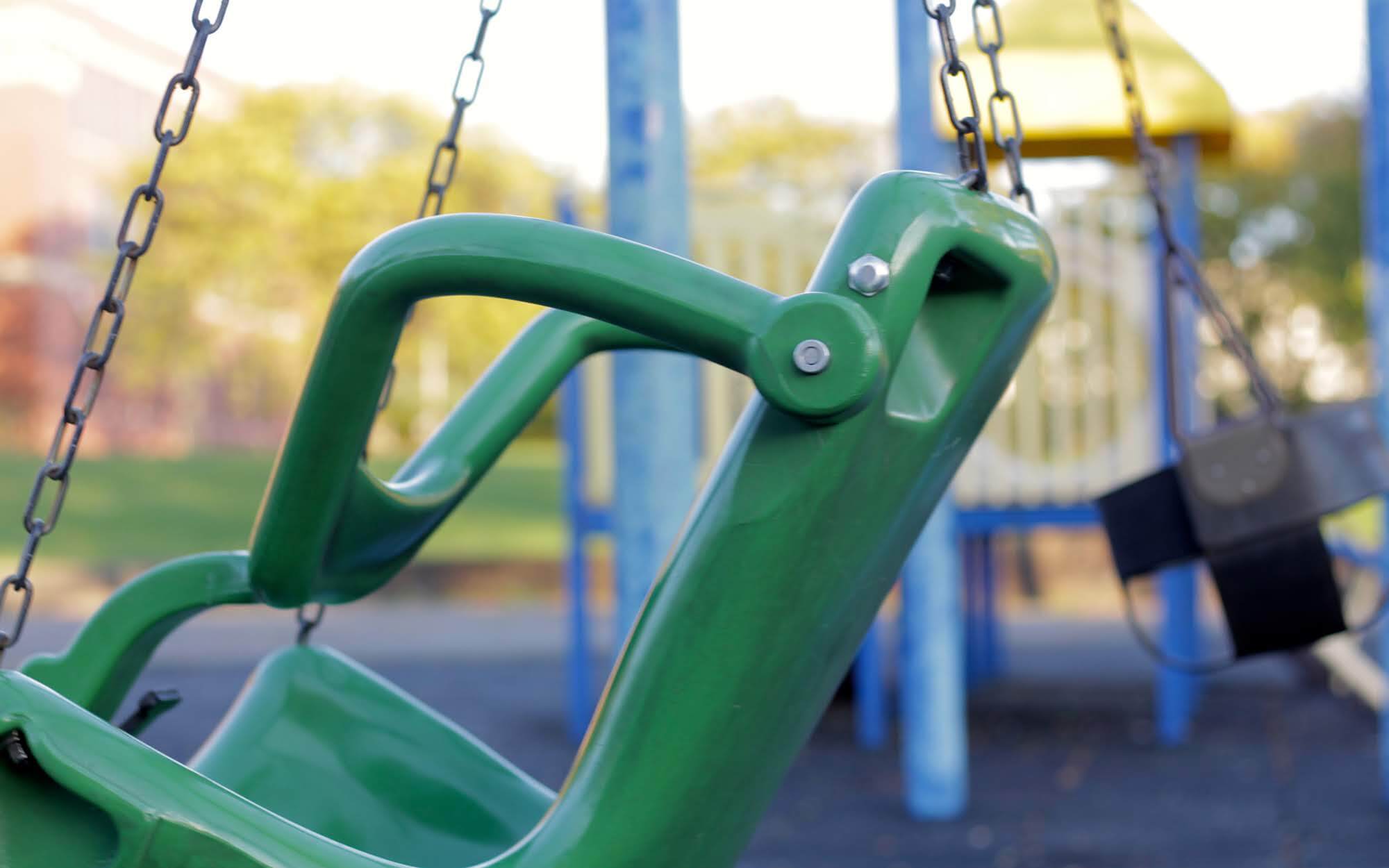
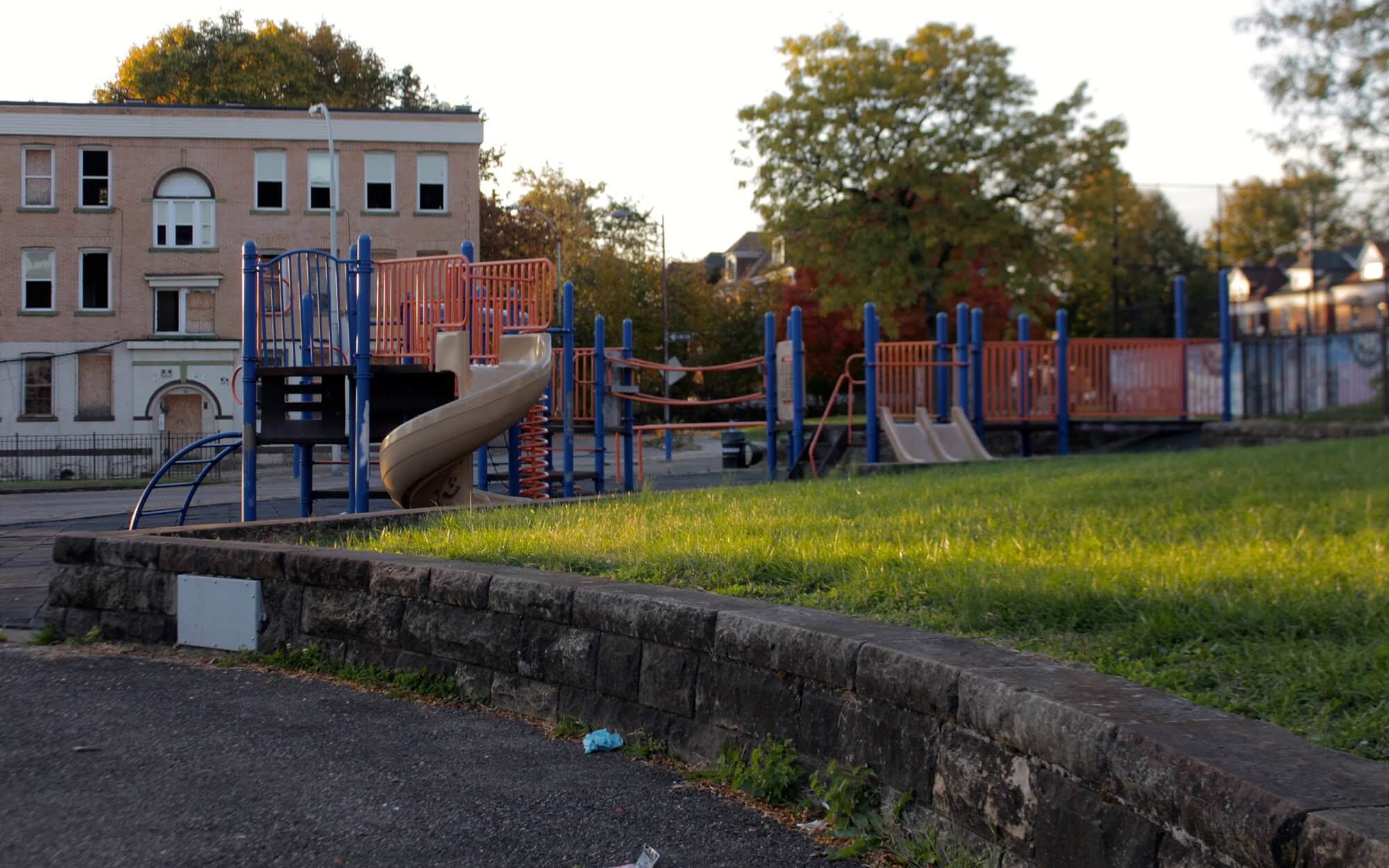



So choices have to be made about where to spend the money that does become available. Meetings and surveys with about 10,000 residents revealed that most Pittsburghers want the conservancy to focus on taking care of existing parks, as opposed to creating any new spaces. So about half of the additional revenue would be put toward improving the everyday maintenance of the parks, such as mowing the grass, emptying the trash and pruning the trees. About another quarter would go toward rehabilitating parks, extending the life of the existing playgrounds, trails and buildings.
That leaves about 28% of the additional money that would go toward major capital improvements that could really change the park experience.
At that rate, it will take 25 years to bring the park system into the modern era, Miller said, so the conservancy had to decide which parks would be rehabilitated first.
The conservancy modeled its plan after similar plans in Minneapolis, Philadelphia and New York. It drew on the city’s already existing plans for open spaces and prioritizing resources to identify the core values of the city. And promoting equity was one of the most important.
Philadelphia and New York prioritized helping vulnerable communities as well but their plans also prioritized putting early park dollars in fast-growing communities that were hot spots for economic development.
Pittsburgh didn’t. Part of that was intentional, said Heather Sage, the conservancy’s director of community projects. Areas in the city that are receiving real estate investment are already putting money into new quasi-public green spaces, she said.
The conservancy plan prioritizes investments in communities that are struggling with poverty, racial inequality, crime, vacant lots, health problems and large populations of the elderly and young. The effort is an attempt to counterbalance a history of disinvestment in these neighborhoods, Sage said.
The conservancy then balanced neighborhood needs with which parks had the most infrastructure problems. What resulted is a list that shows the exact order that parks will receive capital funding decades into the future. In addition to Baxter, the next parks on the list to be renovated are located in Beltzhoover, Spring Hill-City View, the Hill District, Lincoln-Lemington-Belmar and East Liberty.
This is a big change in how renovations are currently funded. Wightman, a 1.25-acre park in Squirrel Hill, is undergoing a $4 million renovation similar in scope to what Baxter would receive, but is located in a neighborhood with little need. The conservancy’s rankings put Wightman at the very bottom of neighborhoods with need: Only seven of the city’s 165 parks are located in neighborhoods with less need. Most of the other big projects the conservancy has worked on recently, at Schenley Park, Mellon Square and Allegheny Commons, would not receive capital funding for years under the new ranking system.
“Everybody deserves all of those benefits and in Pittsburgh right now that’s just not the case,” Sage said.

When Ming Kuo, an associate professor at the University of Illinois, first started researching the human health benefits of nature more than 25 years ago, she was skeptical. People like Henry David Thoreau wrote that humans needed to spend time in nature to be healthy. She thought, “Thoreau is full of it. There is no science to back him up.”
But she suspected there may be something about poor neighborhoods that makes it challenging to thrive — perhaps that they were crowded, noisy or dangerous. She wanted to know if “they are in environments that psychologically handicap them.”
So she set about conducting numerous experiments, looking to see what the health effects of nature might be. Studies Kuo and others have conducted show evidence that spending time in nature can lower stress, improve sleep and decrease blood pressure, she said. It reduces the odds of getting diabetes, depression and heart disease. Spending time in nature is, she said, “effortlessly absorbing,” which gives the parts of your brain that we use for planning and decision-making time to rest.
When that part of the brain doesn’t have a chance to rejuvenate, she said, people show more irritability, aggression and impulsivity. And this has a macro impact: adding greenery can reduce crime and decrease healthcare costs. “Good uses of urban spaces drives out bad uses,” she said.
Kuo stays up late at night, she said, worrying that there may be something other than the nature leading to improvements in health. Over decades of experiments, she said she has found the effects not only exist but are also relatively more significant compared to the harms caused by living in noisy or crowded areas. The benefits are most pronounced among vulnerable populations: low income and minority groups, the young and the old.
In recent years, Kuo finally admitted that science has shown that Thoreau “was right, but he didn’t have any right to say that. His intuition was correct.”
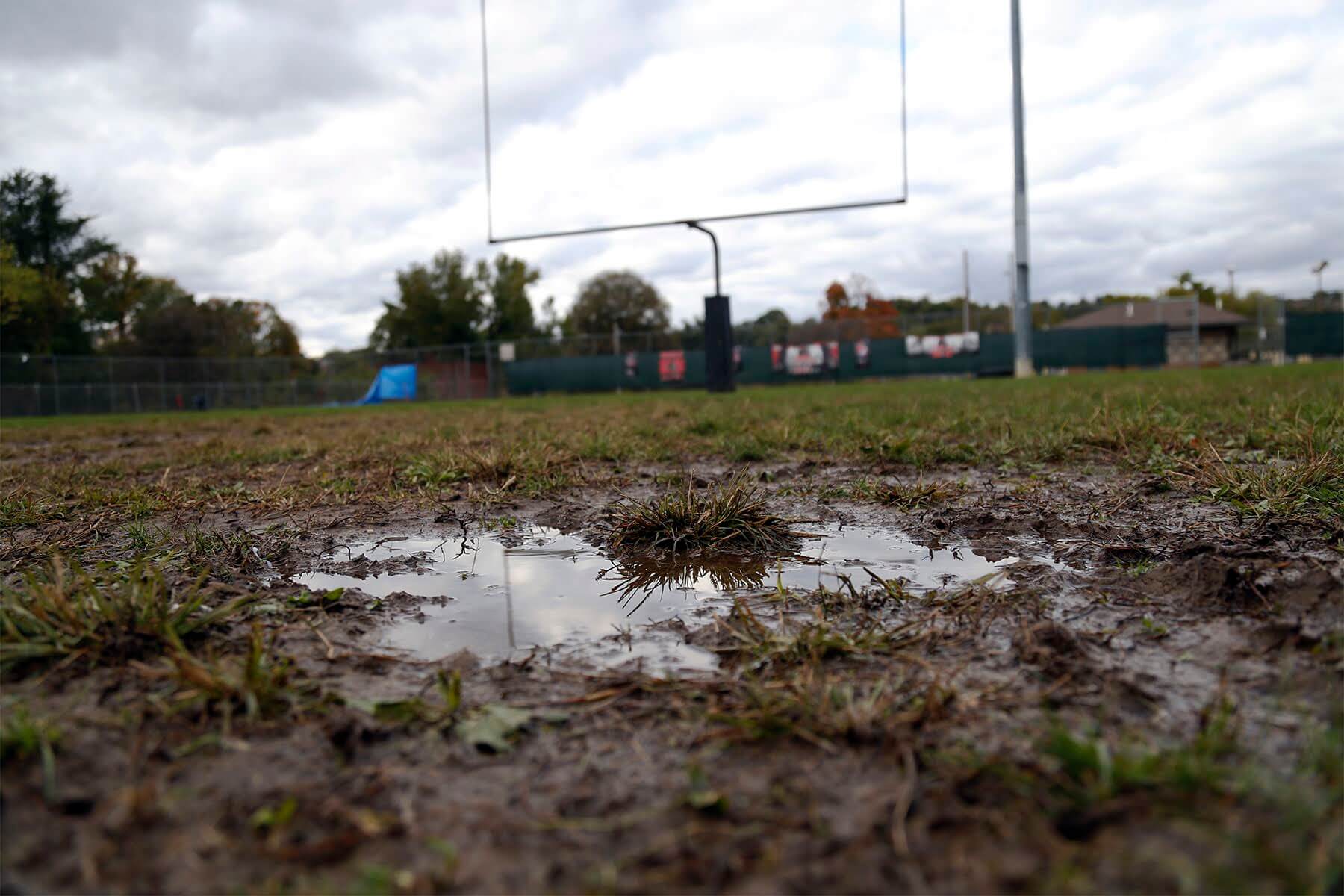

The conservancy’s new parks proposal would track which parks are located in neighborhoods with less tree cover and bigger rainwater problems. The plan is to partner with other agencies to add trees to the parks in communities where it’s lacking and green infrastructure to absorb rainwater in areas that are overwhelmed.
Parks are the main exposure to nature for many urban residents. On average, people visit a park twice a month, according to a study by the National Parks and Recreation Association. Urban green spaces are visited by a more diverse group than state and national parks, according to a 2010 study in Urban Forestry and Urban Greening.
Pennsylvania’s Department of Conservation and Natural Resources released its “Penn’s Parks for All” preliminary report in October. The report found that more than 40% of Black residents reported that a lack of transportation limited their ability to enjoy state parks.
It matters where the parks are located within a city, too. People prefer neighborhood parks like Baxter during the week and regional parks like Frick on the weekend, according to a 2016 study published in Landscape and Urban Planning. Other studies have shown that the closer people are to the places they exercise, the more frequently they will do it. When people exercise to scenes of greenery, it improves their mood and self-esteem more than exercising to urban scenes, according to a 2015 study in the International Journal of Environmental Health Research.
The better equipped the parks are, the more activity there tends to be; and the longer they stay, the more health benefits, according to recent studies on the impact of parks.
While the people who show up experience the greatest benefits, some studies have shown that people who merely live near a park still show psychological benefits.
Parks have financial benefits, too. Homeowners who live near a park can expect their property values to increase by 8% to 10%, according to a meta-study of 33 other studies, published in August in the Journal of Leisure Research. The effect is even more pronounced for multi-family buildings or homes with small yards, where shared green space is otherwise lacking.
Bonnie Glover, who lives in the closest home to Baxter Parklet and would arguably be one of the biggest beneficiaries of the new parks plan, hadn’t yet heard about it. She attended Baxter Elementary School behind the park in the 1960s and used to let her children play at the park after she moved there in 1996. Now her grandchildren sometimes play there, but she said there are not enough swings for them.
She is not looking to pay the extra $50 on her property tax bill, she said, but would probably vote for the new tax anyway. She would love it if the city would put some of the $3 million that the conservancy is planning to spend at Baxter on better lighting at night and a spray park for the summers. If the tax passes, the conservancy will convene an engagement process with local residents like Glover to figure out how to spend the money.
“It doesn’t have basketball,” she said. “And you know the kids love that.”

Although Peduto supports the proposal, there isn’t much in it yet that directly addresses his goal of having a park within 10 minutes of every resident by 2030. Right now, 91% of Pittsburghers live within 10 minutes of a park, and the details of the current proposal focuses on improving their experience.
The conservancy wrote in an email that, as it implements the plan, it will look at combining parks, activating greenways that haven’t yet been turned into parks and even using empty lots to fill in the gaps between parks.
The Pittsburgh Parks for All campaign received nearly $761,000, most of it from the conservancy. The Pittsburgh Urban Magnet Project [PUMP] also contributed to support the campaign, according to campaign finance reports. The largest campaign expense was nearly $250,000 in TV advertisements.
The conservancy's proposal has been met with skepticism from some city leaders, the local press and in online community forums, although there isn’t an organized opposition.
City Controller Michael Lamb said he worries that using a referendum to fund progressive causes could be abused and take power away from city leaders who are supposed to manage such projects. A similar referendum for the city’s libraries passed in 2011 but another one in support of childhood enrichment programs countywide failed last year.
The editorial board at the Pittsburgh Post-Gazette admits that the city’s small parks are in bad shape but thinks the money for their rejuvenation should come from Regional Asset Dollar funds that already exist. Right now, that money can only be spent on large, regional parks. That’s one reason, Mike Gable, the director of Pittsburgh Public Works, said the regional parks often look nicer than the city’s parks.
Sue Kerr, who writes the Pittsburgh Lesbian Correspondents blog, said there are more urgent priorities in the city now. “Better parks are probably not going to have a direct impact on that reality. Indirectly and over time, yes,” she wrote. “...there are immediate life-threatening needs for our Black residents that the City must address yesterday including income disparity, maternal health, and police referrals from our public schools.”
When Miller was the director of the parks system in Minneapolis, before being hired at the conservancy, she spent the first years of her tenure improving the efficiency of how the parks system was managed and saved several million dollars. Only then did she propose a referendum to fill the remaining need. That showed the community that she would focus on spending money efficiently before asking for more, she said.
But in Pittsburgh, Miller said, the parks are too underfunded. “We don’t have the resources to become more efficient,” she said.
There are more than 70 city employees in charge of the maintenance at the five regional parks, Gable said, but 33 to 35 employees for the other 160 parks. “I don’t think there are many other cities that have so few workers,” he said. “That’s crazy. That’s five parks for every worker. It probably should be the reverse.”
Gable tries to focus the city’s resources on services the public notices the most, such as picking up trash, cutting the grass and pruning trees. But even that falls behind schedule, he said. “So, for example, we might need to pick litter in the summer everyday or every other day but, with that staffing, we may not get around to it until every week,” he said.
The city should be redoing the surfaces of about 20 courts per year, such as tennis and basketball, but they don’t have the resources to keep up. The funding has increased under Peduto, he said, but in previous administrations they sometimes didn’t fix any. “We don’t want people playing on courts where they are going to injure themselves,” he said. “So we try to fill in the cracks with a filler, a Band-Aid.”
It’s not Gable’s job to say where the extra resources should come from, he said. He’s requested funding for 20 additional workers through the regular budgeting process, but would be happy to get additional resources through the property tax referendum as well. He cautioned that, even if it is passed, it’s going to be a few years before people start to notice a big difference. Only five parks are scheduled for improvements through 2023 and, after that, it ramps up to about five per year.
Ty Bray, who runs the Hill District Rebels youth football at Kennard Park in the Hill District, said there is an urgent need. Bray, 33, started playing football at Kennard when he was 10. As an adult, he started coaching and, four years ago, he became director. The number of players in the league increased from about 125 to more than 200 under his leadership and, for the first time, he said all five teams were undefeated this year. Hundreds will show up to watch their teams play on the weekend.
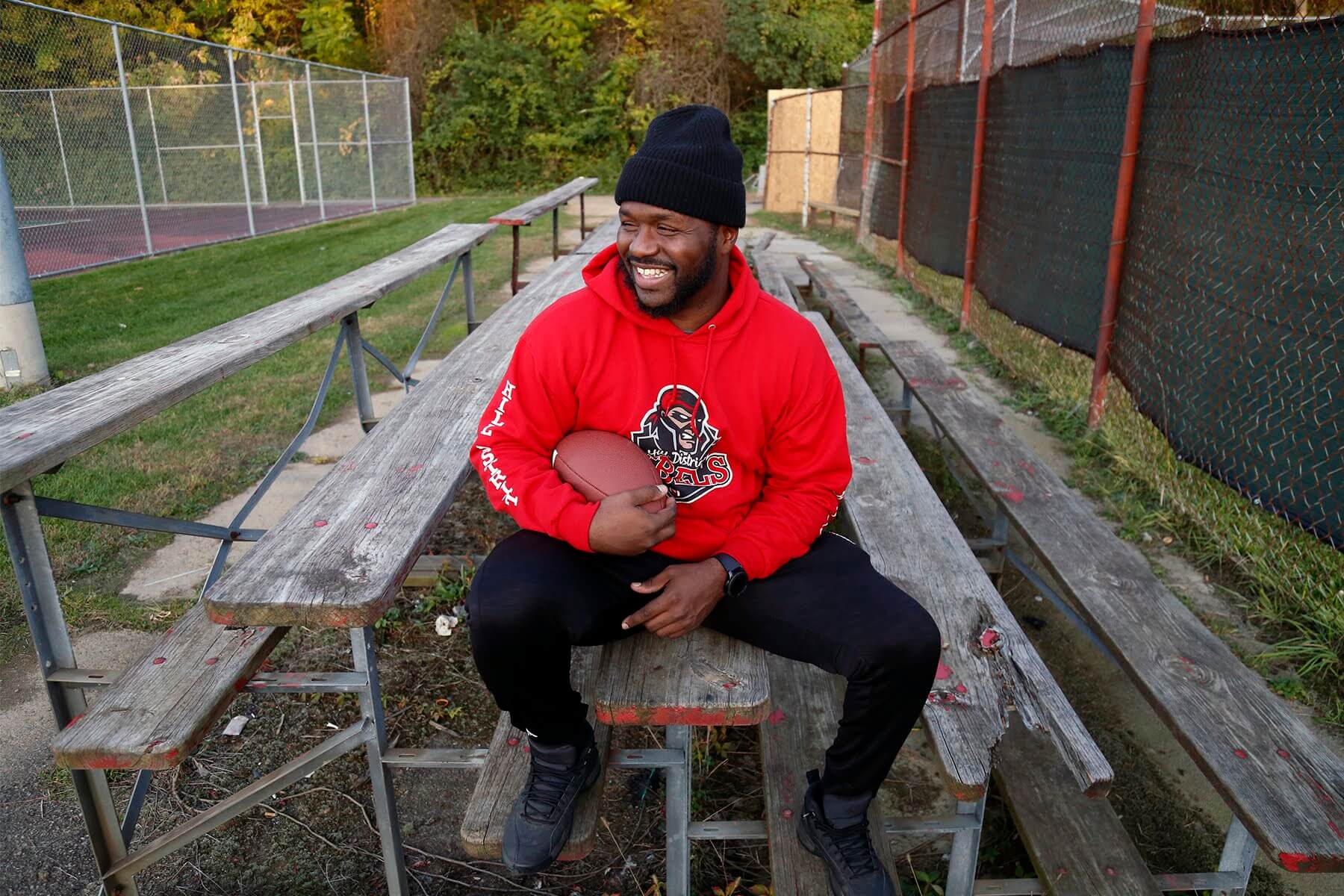
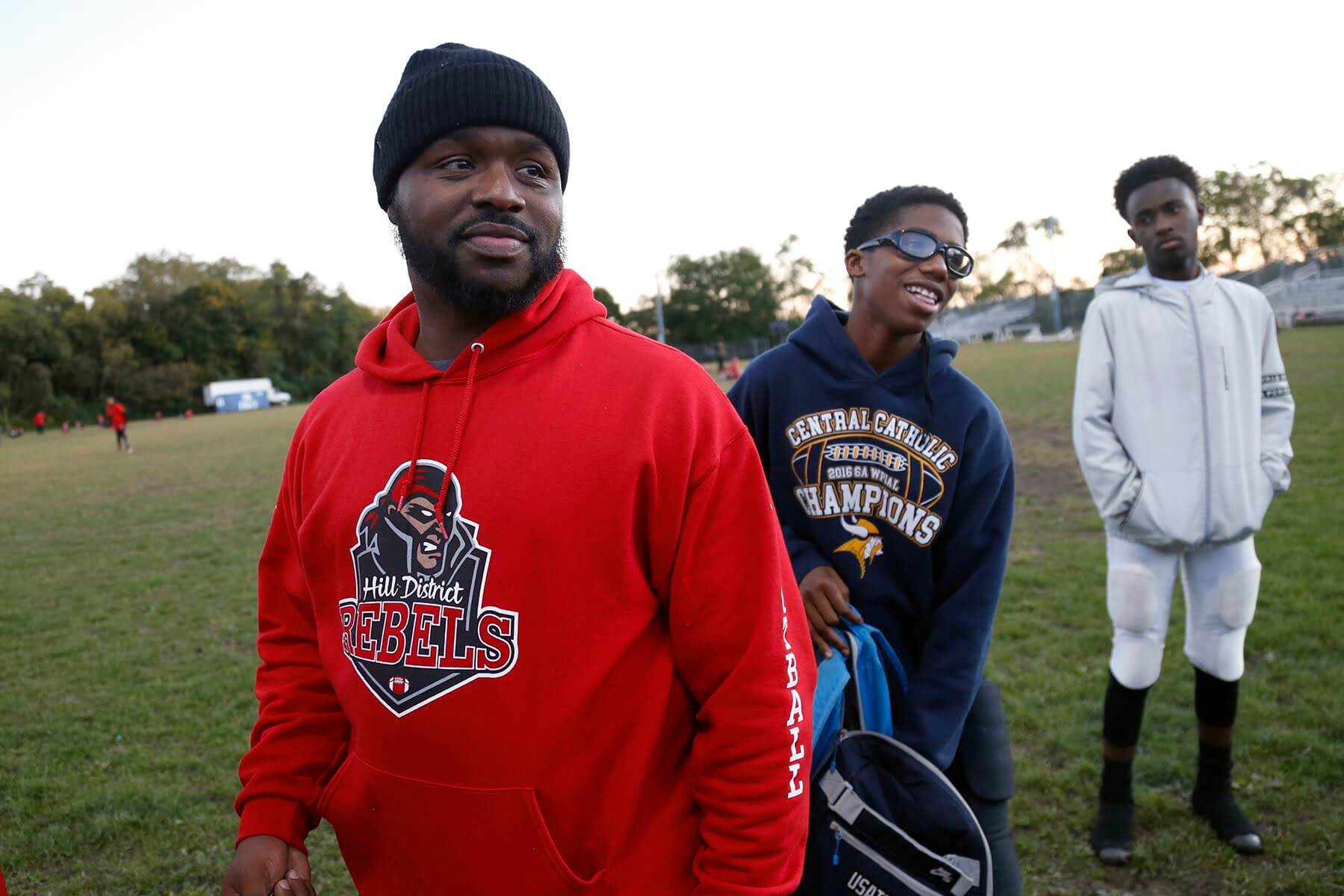


Kennard is “terrible,” Bray said. The field fills with mud after it rains. Two pieces of plyboard fill in missing parts of fence in the baseball dugout. A building that is supposed to be a bathroom for the kids is in such bad shape it’s used for storage instead, he said. The kids use porta-potties. One of the basketball courts at the park has dozens of black strips to cover over the holes; the tennis court has open cracks.
Kennard Park would receive about $13 million in renovations in 2023, including $9 million from the city and an additional $4 million if the tax passes. Bray has lots of ideas for what to do with the funds. He would create a turf field, so kids didn’t have to play in mud, and cover the basketball courts. He’d expand the concessions stand and improve the lighting.
Melvin Cherry, 75, one of the coaches when football was brought to the park in the early 1990s, said he would put up a building where kids could study after school, with locker rooms to change into their football uniforms and shower after practice.
After hearing that Kennard was two spots behind McKinley Park in the South Hills near Beltzhoover, which would receive around $11.5 million in 2021, Bray said he understood why. “There ain’t nothing there,” he said.
“Those kids don’t have nothing to do at those parks,” Cherry agreed. "They don’t have anything.”
That’s the kind of understanding the conservancy was hoping for when it decided to prioritize spending according to the communities that need it most. Before coming to Pittsburgh in February 2018, Miller pushed Minneapolis’ parks system to prioritize all its spending, not just its big capital expenditures, by racial and economic measures: It is the only park system in the country to do so, she said.
Cherry owns several pieces of property, so he hesitated a few seconds before saying he would support the new property tax referendum. “If it’s about increasing money to redo our parks and community here,” he said, “I’m 110 percent for it.”
Oliver Morrison is PublicSource’s environment and health reporter. He can be reached at oliver@publicsource.org or on Twitter @ORMorrison.
This story was fact-checked by Sam Marks.
This project has been made possible with the generous support of The Grable Foundation.